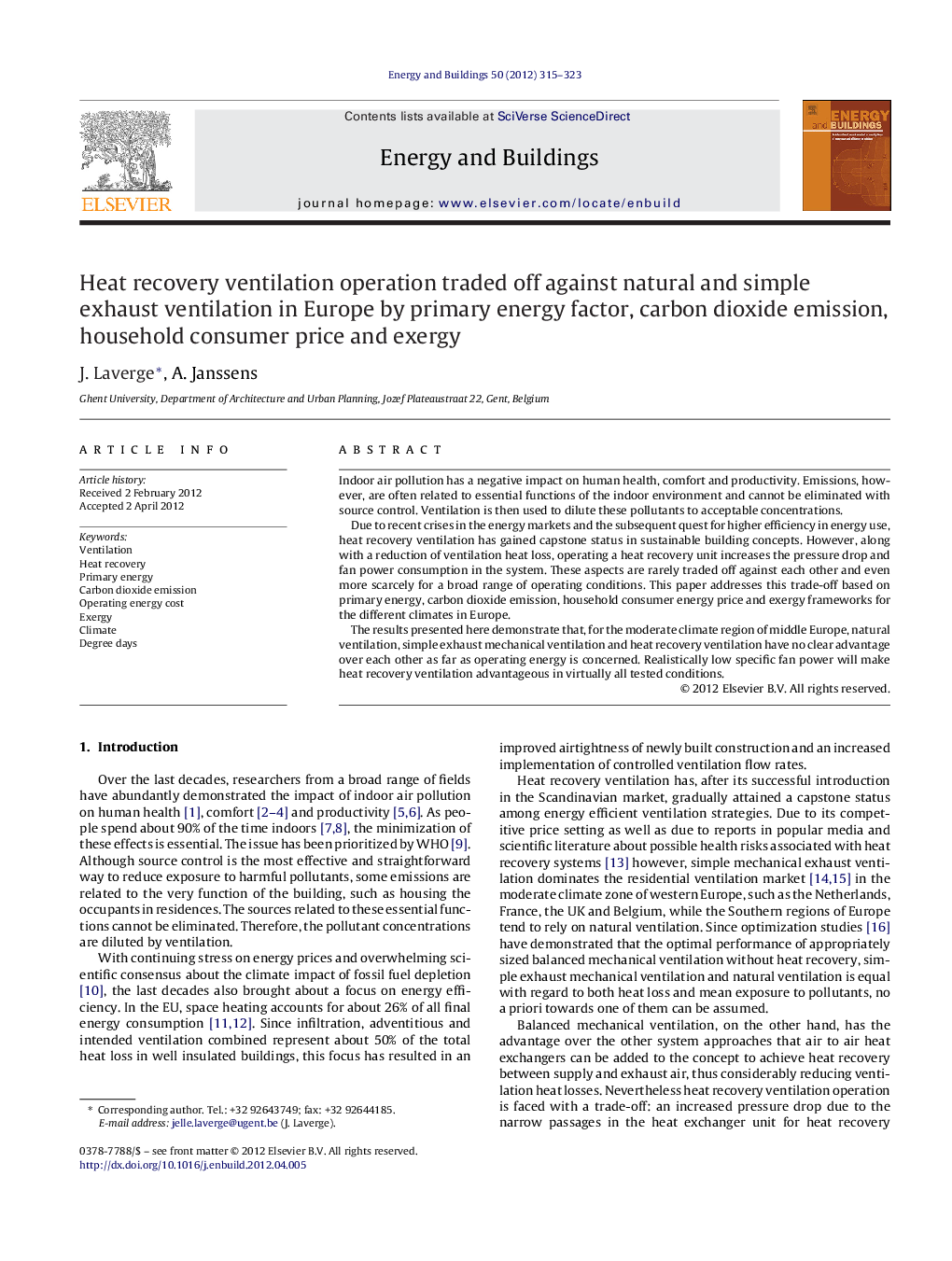| Article ID | Journal | Published Year | Pages | File Type |
|---|---|---|---|---|
| 263776 | Energy and Buildings | 2012 | 9 Pages |
Indoor air pollution has a negative impact on human health, comfort and productivity. Emissions, however, are often related to essential functions of the indoor environment and cannot be eliminated with source control. Ventilation is then used to dilute these pollutants to acceptable concentrations.Due to recent crises in the energy markets and the subsequent quest for higher efficiency in energy use, heat recovery ventilation has gained capstone status in sustainable building concepts. However, along with a reduction of ventilation heat loss, operating a heat recovery unit increases the pressure drop and fan power consumption in the system. These aspects are rarely traded off against each other and even more scarcely for a broad range of operating conditions. This paper addresses this trade-off based on primary energy, carbon dioxide emission, household consumer energy price and exergy frameworks for the different climates in Europe.The results presented here demonstrate that, for the moderate climate region of middle Europe, natural ventilation, simple exhaust mechanical ventilation and heat recovery ventilation have no clear advantage over each other as far as operating energy is concerned. Realistically low specific fan power will make heat recovery ventilation advantageous in virtually all tested conditions.
► Specific fan power is decisive factor in heat recovery ventilation saving potential. ► No clear advantage in moderate climate region. ► Renewables and nuclear power more important as boundary conditions than climate.
